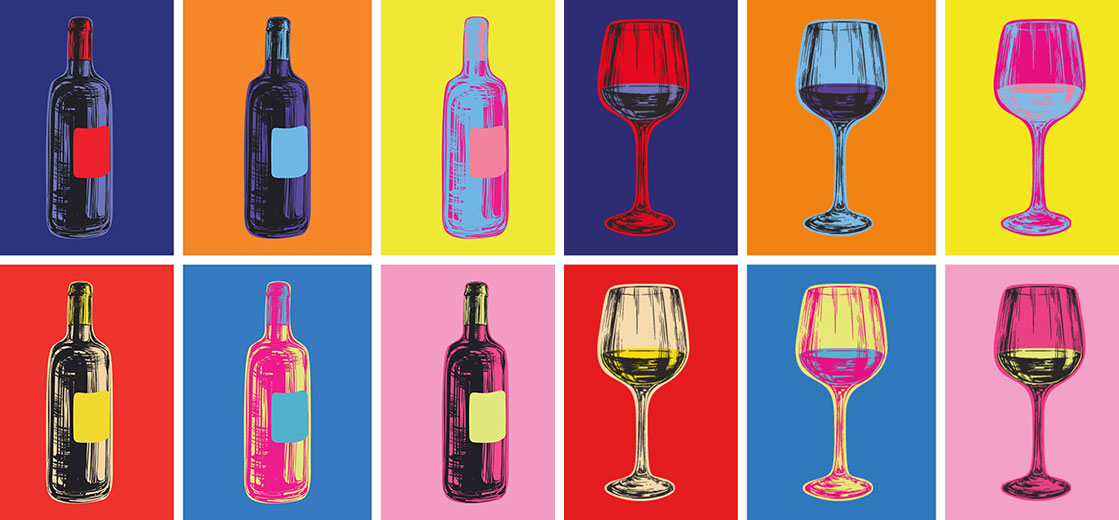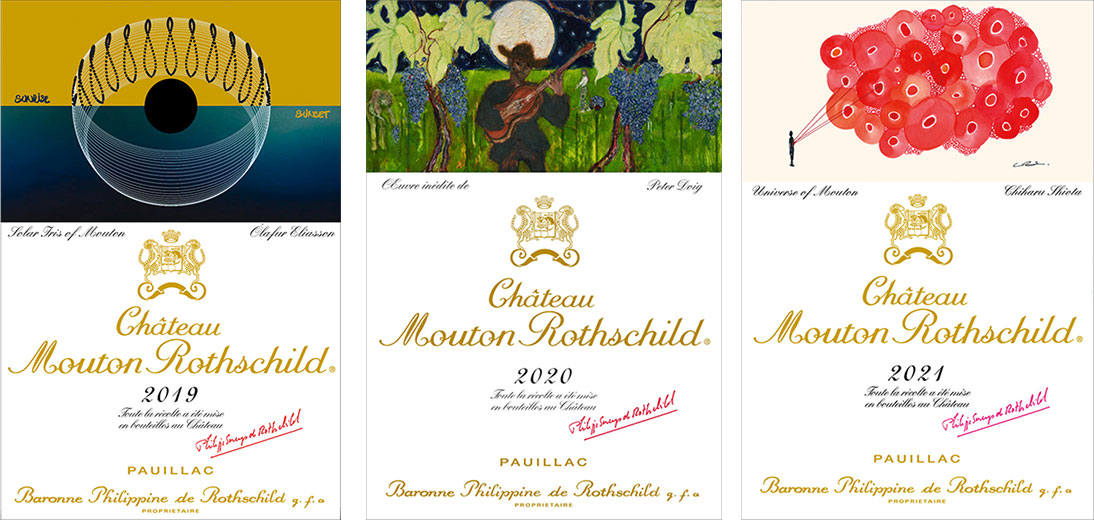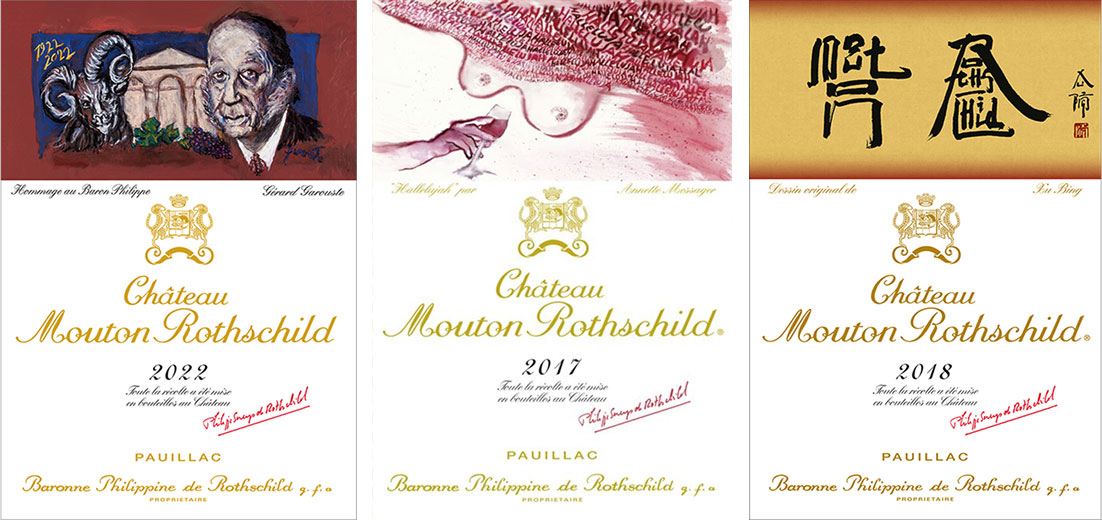Wine on Canvas – Iconic Works as Expressions of Wine Culture
Throughout the centuries, wine has shaped not only human culture and social life but has also left a significant mark on art and artists. Wine and art history – a pairing that simply works. From the ancient Greeks to modern creators, wine appears as a recurring motif in painting, graphic art, and photography in countless forms.
Ancient myths and Christian iconography
Wine's history is inseparable from faith and ritual. In antiquity, wine was considered a divine gift – a sacred elixir connecting earthly life with the gods. Bacchus, the Roman god of wine, or Dionysus in Greek mythology, embodied excess, ecstasy, and joy. This symbolism continued in Christianity: at the Last Supper, wine becomes the blood of Christ – a symbol of devotion, sacrifice, and spiritual renewal. In sacred art, wine is more than a decorative element: it appears on altars, in chalices, and festive scenes – positioned somewhere between solemnity and everyday life, between sensual pleasure and spiritual meaning.
A celebration of life: Baroque & Renaissance
Baroque art depicted life – ideally in all its opulence. Wine represented prosperity and celebration, sometimes also the passage of time (vanitas). In Caravaggio’s work, for instance, Bacchus wears a crown of vine leaves and gazes at the viewer with playful weariness. It’s an image of abundance – and transience. Diego Velázquez’s painting The Triumph of Bacchus shows the wine god rewarding ordinary men with wine – a scene that blends mythology with the everyday and reflects the social role of wine as a source of joy and intoxication.
Modern rebellions: From Picasso to Banksy
In the 20th century, wine in art took on new, more radical forms – abstract, ironic, and often as a social commentary. Artists like Pablo Picasso, a known wine enthusiast, broke with traditional representations and integrated wine bottles and glasses into their Cubist still lifes. In Picasso’s work, wine becomes a geometric fragment – deconstructed and reassembled.

In contemporary art, wine appears in varied and often surprising ways: as material, motif, or symbol. Pop and street artists approach wine in their own ways. In Andy Warhol’s work, champagne labels reflect consumerism, glamour, and surface culture. Banksy, on the other hand, uses wine more subtly – as a quiet witness in a world spiraling out of control. A casually placed glass of wine becomes a symbol of escape from surveillance, chaos, and coldness. Feminist artists like Tracey Emin or Sarah Lucas use empty wine bottles in their installations as metaphors for excess, vulnerability, or impermanence. Intoxication is not romanticized but dissected.
In modern art, wine is no longer just a symbol of festivity and abundance, but increasingly a reflection of societal fractures and a vehicle for irony and protest. These works don’t just show wine – they show us something about ourselves and our role in society by interpreting and challenging how we relate to wine.
Wine as Pigment
Sometimes wine isn’t the motif – it’s the material. Artists experiment with real wine stains, pigmented residues, or fermented color gradients. Wine becomes brushstroke and pigment with a story. Over time, it oxidizes, fades, and visually expresses both becoming and decay. The result is unpredictable – and that’s where its poetic power lies.Wine Labels as a Form of Art
Since 1945, Château Mouton Rothschild has commissioned a renowned international artist to design its wine label each year.
Often overlooked, yet small canvases with big impact: wine labels are a brilliant example of how artistic expression can meet everyday functionality. What once was purely informational is now a projection surface for creative visions. Today, labels are often created by well-known artists, and the bottle itself becomes an art object. An iconic example is Château Mouton Rothschild, which since 1945 has commissioned a different internationally celebrated artist each year to design its wine label – including luminaries such as Pablo Picasso, Joan Miró, David Hockney, Jeff Koons, and Gerhard Richter. These labels have become collector’s items – miniature pieces of art history.


In our prize draw, we're raffling off three copies of the bilingual edition of the book „Chateau Mouton Rothschild - Weinprobe & Kunst 1924/1945-2011 Tasting & Art". This beautifully curated volume features illustrations of all the iconic Mouton Rothschild wine labels, along with background information on each of the artists behind them.
Participate & Win
Participate & Win
Another example is Sicilian winery Donnafugata, founded by Giacomo and Gabriella Rallo. Since the 1990s, their wines have featured vibrant, expressive labels inspired by Gabriella’s vision and illustrated by artist Stefano Vitale. The designs include poetic portraits, literary references, and the iconic “fleeing woman” that gave the winery its name. The labels tell stories, evoke emotions, and play a central role in making Donnafugata’s wines instantly recognizable.
Design meets Wine – Drinkable Art
Berlin-based photographer and designer Philipp Haas launched the HEM project to unite wine, culture, and creativity. From his vineyards in the Mosel region, he creates unique artworks: the vine not only produces the liquid content, but becomes motif and medium. His one-of-a-kind wine labels are made using pigment extracted from pyrolyzed vines. HEM stands for “home” in the Mosel dialect and is also the initials of his grandmother, who brought winegrowing into the family. This project, combining tradition and innovation and capturing the diversity and beauty of the Mosel, was honored with the Rheinland-Pfalz Design Award.
More on the HEM Edition by Philipp Haas (Website in German)
More on the HEM Edition by Philipp Haas (Website in German)
Of Chickens and Wallpaper
At Pollerhof in Austria, the lines between craftsmanship, art, and viticulture blur. Winemaker Erwin Poller is creative, eccentric, and delightfully quirky – something like the Woody Allen of winemaking. His wines have character and stories – even down to the labels. These aren’t mass-produced bottles, but small works of art: for example, real chicken feathers decorate the Hühnergarten Grüner Veltliner, and scraps of floral wallpaper adorn the Frau Mayer label, a tribute to a woman who once leased her 80-year-old vineyard to Poller. Each label is a personal one-off – telling stories of place and people. A reflection of personality, home, and perspective. Art you can touch – and drink.
Why do wine and art go so well together?
Wine and art stimulate the senses in uniquely powerful ways. As a symbol, subject, and even material, wine bridges everyday life and celebration, intoxication and ritual. It’s as multifaceted as we are – pleasure, escape, or sign of connection. In art, wine is never just what’s in the glass – it’s everything that remains once the glass is empty.
Seite bewerten
Welcome to wine.vino.wein – the wine lover’s magazine
In our magazine you will find editorial articles and information about wine. As we are committed to the responsible use of alcoholic beverages, the content is aimed exclusively at adults and you must be at least 18 years old to visit wine.vino.wein.